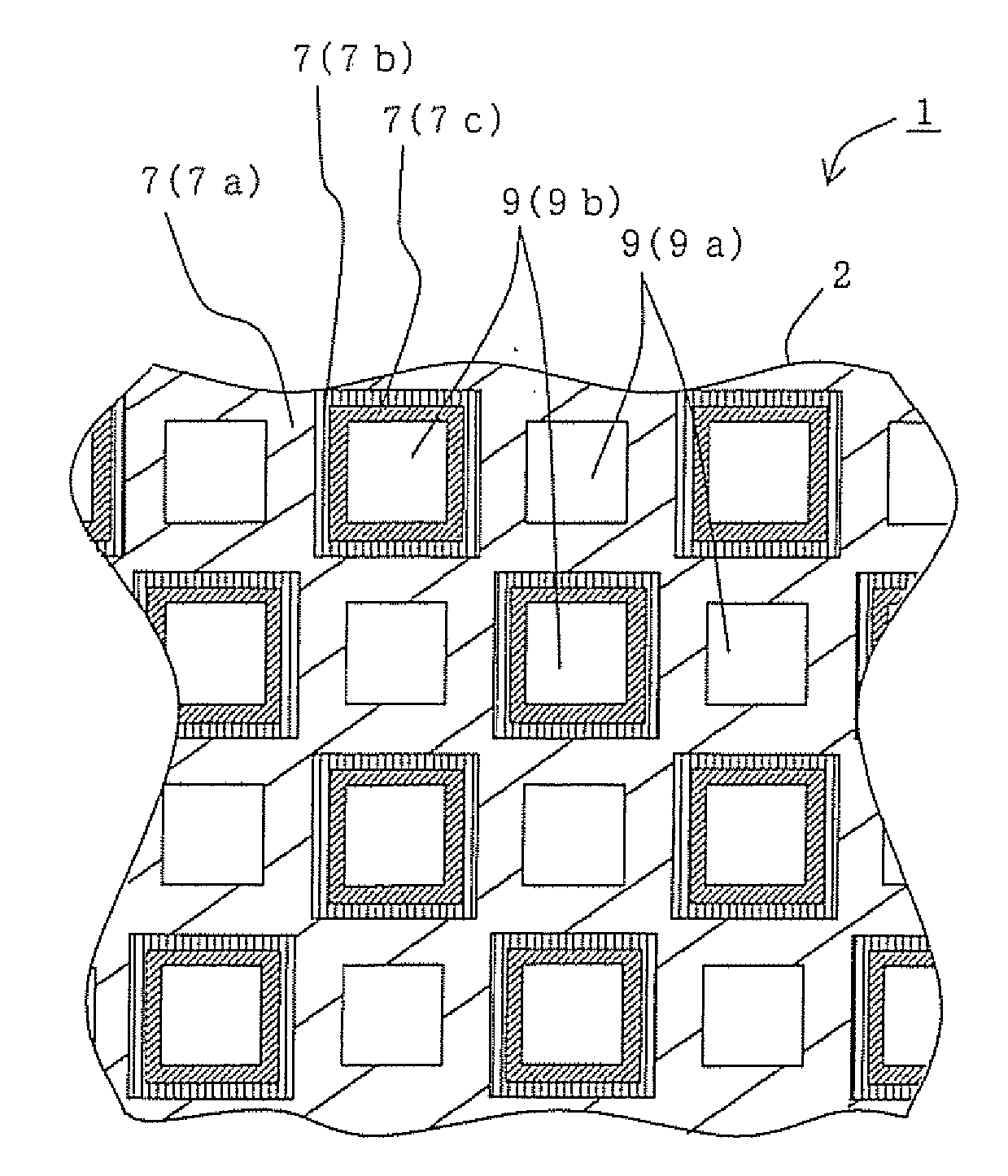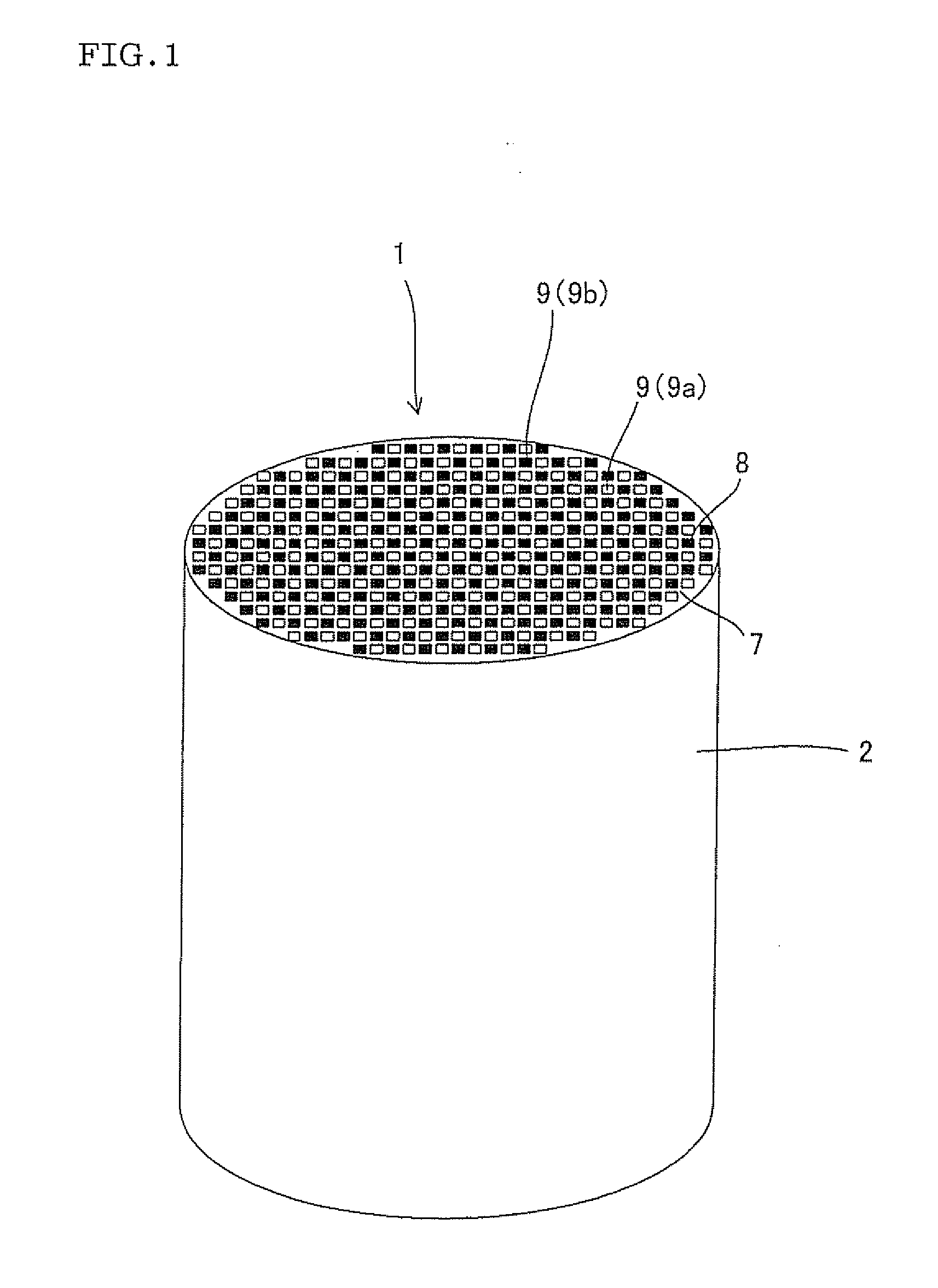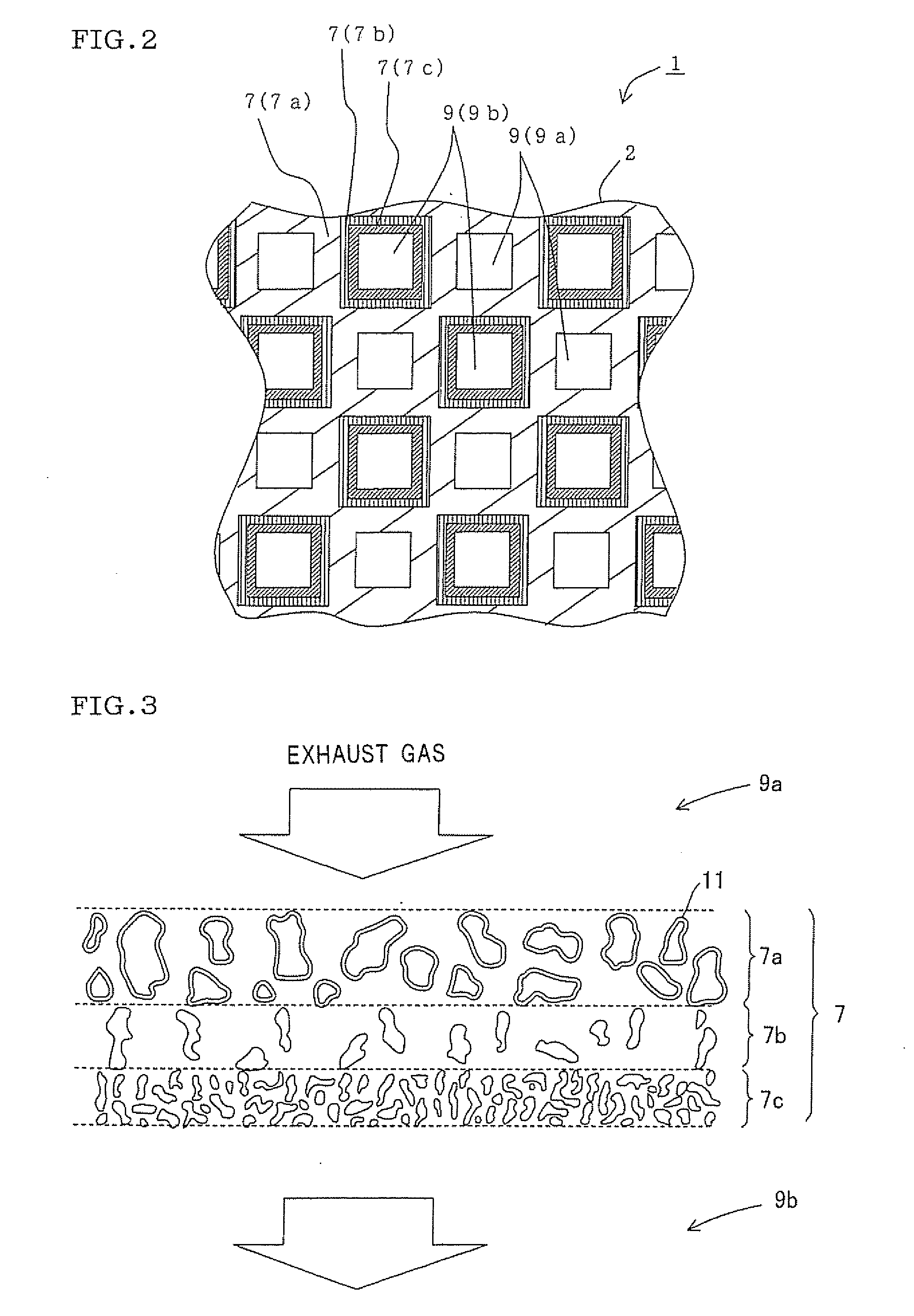Honeycomb filter
- Summary
- Abstract
- Description
- Claims
- Application Information
AI Technical Summary
Benefits of technology
Problems solved by technology
Method used
Image
Examples
example 1
[0172]As a honeycomb filter according to Example 1, as shown in FIG. 13, a honeycomb filter 1 was manufactured in which a portion to be the skeleton of a honeycomb structure 2 was constituted of a third wall portion 7c. A second wall portion 7b and a first wall portion 7a were laminated on the front surface of this third wall portion 7c in the thickness direction of a partition wall 7. Furthermore, a fourth wall portion 7d was arranged on the back surface of the third wall portion 7c.
[0173]First, a forming clay for forming a honeycomb structure precursor made of the third wall portion was prepared. The forming clay was prepared by adding 35 parts by mass of water as a dispersion medium and 5 parts by mass of pore former to 100 parts by mass of cordierite forming material, further adding 6 parts by mass of organic binder and 0.5 part by mass of dispersant, and kneading these materials by use of a kneader. As the cordierite forming material, there was used a heretofore known cordieri...
example 8
[0184]As a honeycomb filter of Example 8, a filter having a honeycomb structure in which a portion to be a skeleton of the honeycomb structure was constituted of a third wall portion, and second and first wall portions were laminated on the front surface of this third wall portion in the thickness direction of a partition wall, was manufactured.
[0185]First, a forming clay for forming a honeycomb structure precursor made of the third wall portion was prepared. The forming clay was prepared by adding 36 parts by mass of water as a dispersion medium and 5 parts by mass of pore former to 100 parts by mass of cordierite forming material, further adding 5 parts by mass of organic binder and 0.5 part by mass of dispersant, and kneading these materials by use of a kneader. As the cordierite forming material, a material constituted in the same manner as in the cordierite forming material used in Example 1 was used.
[0186]Subsequently, the obtained forming clay was extruded using a die having ...
example 9
[0195]A honeycomb filter (Example 9) was manufactured which was constituted in the same manner as in Example 8 except that a slurry containing an aluminosilicate fiber was used as a slurry for a first wall portion, this slurry was atomized with an atomizer and sucked together with air from a masked side to form a layer, and this layer was dried to form the first wall portion. A structure of a honeycomb structure in Example 9 is referred to as a structure C. Table 2 shows the hydraulic diameter of a cell, a PM accumulation time, a PM accumulation pressure loss, a PM trapping efficiency, a detected CO amount, and the evaluation result of general evaluation.
PUM
| Property | Measurement | Unit |
|---|---|---|
| Length | aaaaa | aaaaa |
| Length | aaaaa | aaaaa |
| Fraction | aaaaa | aaaaa |
Abstract
Description
Claims
Application Information
 Login to View More
Login to View More - R&D
- Intellectual Property
- Life Sciences
- Materials
- Tech Scout
- Unparalleled Data Quality
- Higher Quality Content
- 60% Fewer Hallucinations
Browse by: Latest US Patents, China's latest patents, Technical Efficacy Thesaurus, Application Domain, Technology Topic, Popular Technical Reports.
© 2025 PatSnap. All rights reserved.Legal|Privacy policy|Modern Slavery Act Transparency Statement|Sitemap|About US| Contact US: help@patsnap.com



